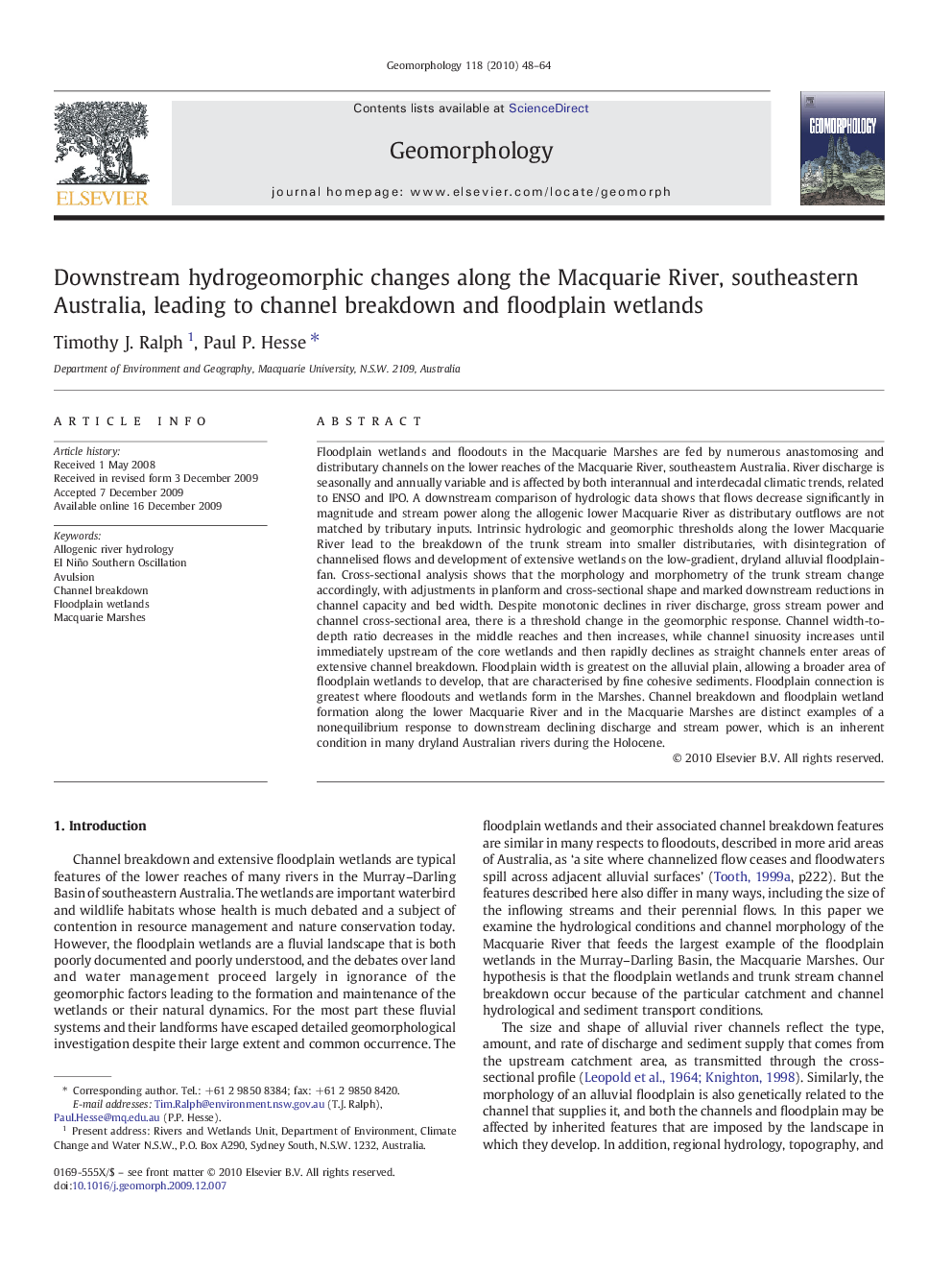| Article ID | Journal | Published Year | Pages | File Type |
|---|---|---|---|---|
| 4686050 | Geomorphology | 2010 | 17 Pages |
Floodplain wetlands and floodouts in the Macquarie Marshes are fed by numerous anastomosing and distributary channels on the lower reaches of the Macquarie River, southeastern Australia. River discharge is seasonally and annually variable and is affected by both interannual and interdecadal climatic trends, related to ENSO and IPO. A downstream comparison of hydrologic data shows that flows decrease significantly in magnitude and stream power along the allogenic lower Macquarie River as distributary outflows are not matched by tributary inputs. Intrinsic hydrologic and geomorphic thresholds along the lower Macquarie River lead to the breakdown of the trunk stream into smaller distributaries, with disintegration of channelised flows and development of extensive wetlands on the low-gradient, dryland alluvial floodplain-fan. Cross-sectional analysis shows that the morphology and morphometry of the trunk stream change accordingly, with adjustments in planform and cross-sectional shape and marked downstream reductions in channel capacity and bed width. Despite monotonic declines in river discharge, gross stream power and channel cross-sectional area, there is a threshold change in the geomorphic response. Channel width-to-depth ratio decreases in the middle reaches and then increases, while channel sinuosity increases until immediately upstream of the core wetlands and then rapidly declines as straight channels enter areas of extensive channel breakdown. Floodplain width is greatest on the alluvial plain, allowing a broader area of floodplain wetlands to develop, that are characterised by fine cohesive sediments. Floodplain connection is greatest where floodouts and wetlands form in the Marshes. Channel breakdown and floodplain wetland formation along the lower Macquarie River and in the Macquarie Marshes are distinct examples of a nonequilibrium response to downstream declining discharge and stream power, which is an inherent condition in many dryland Australian rivers during the Holocene.
